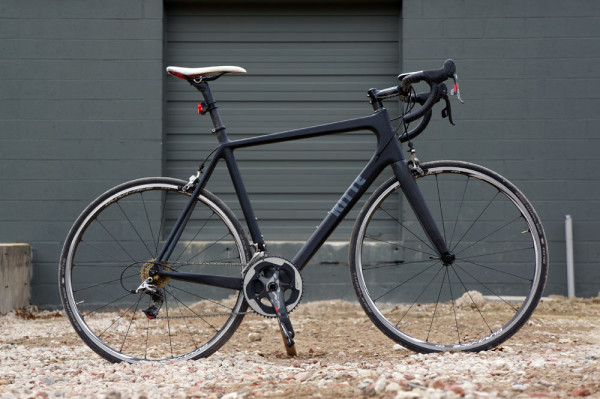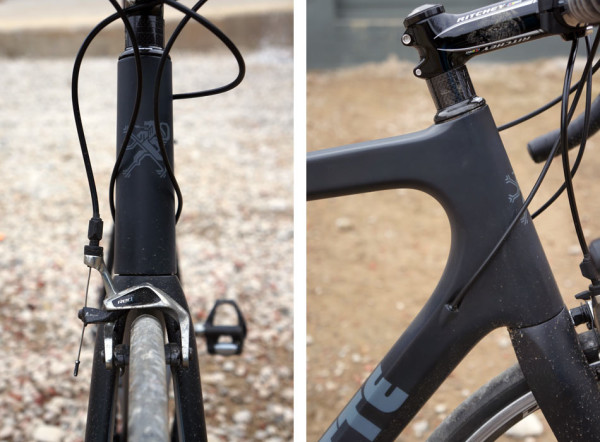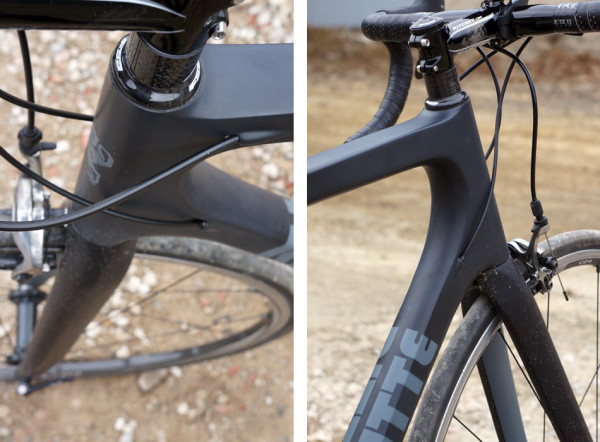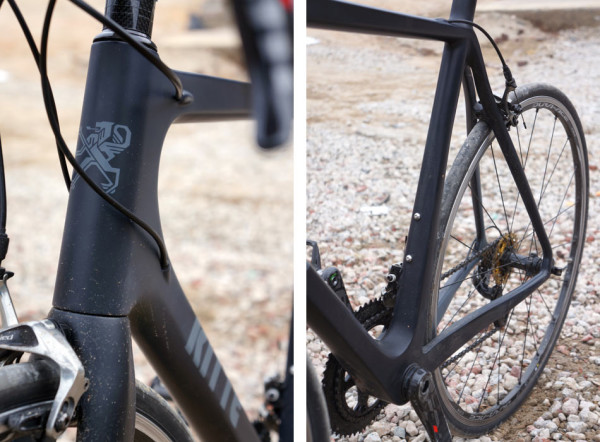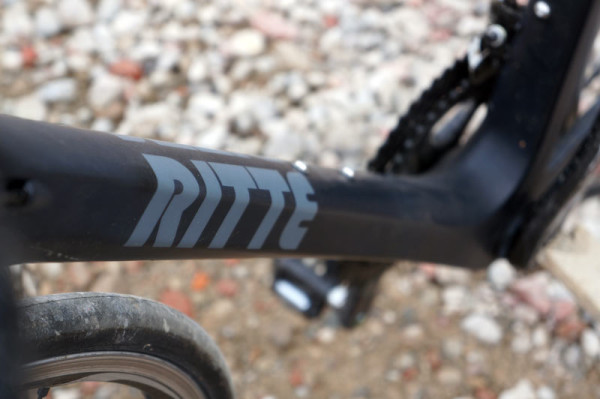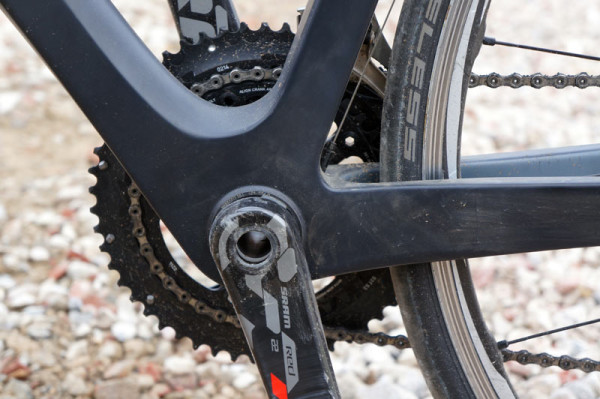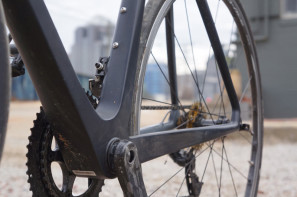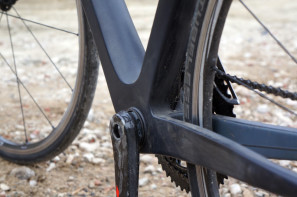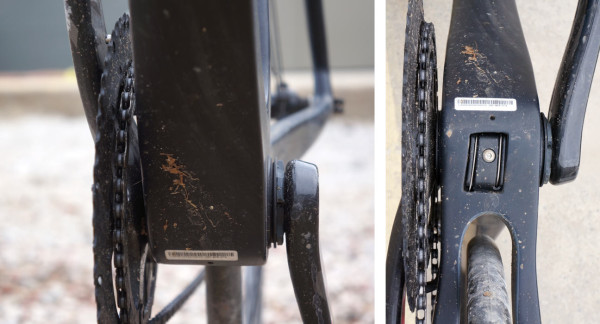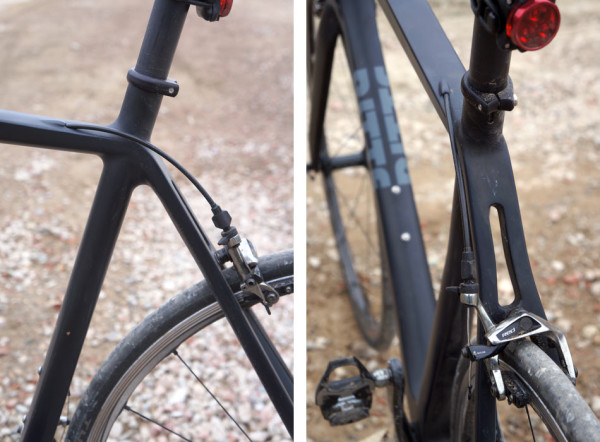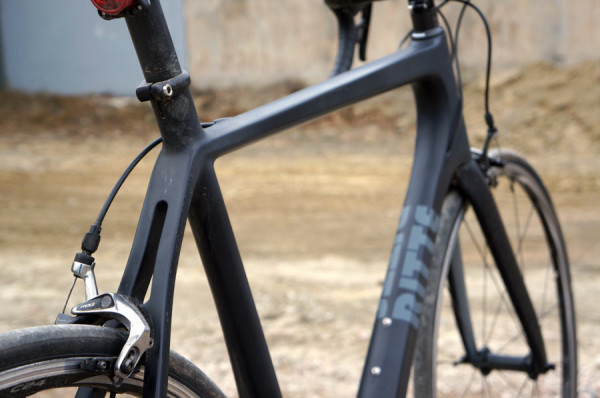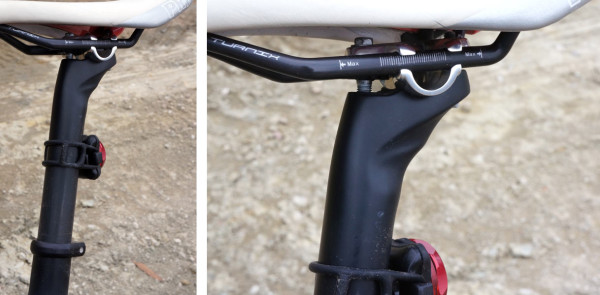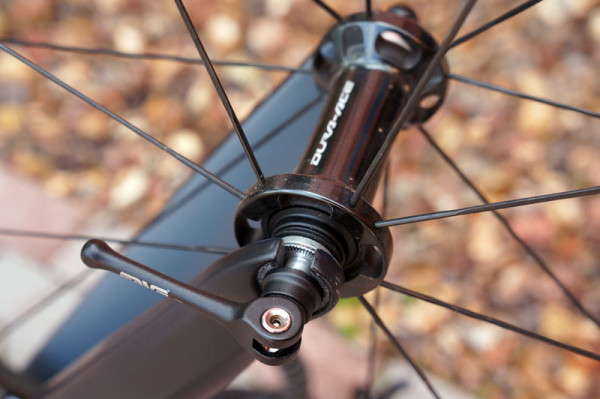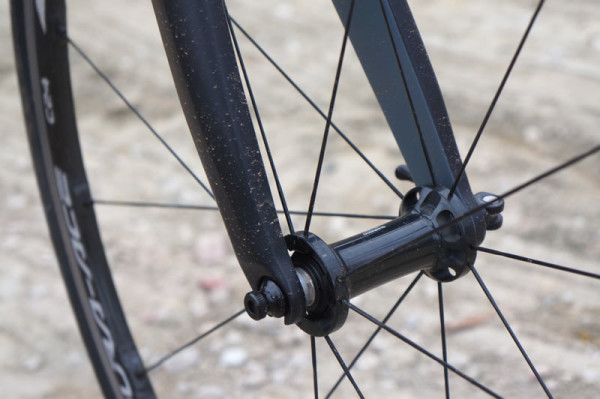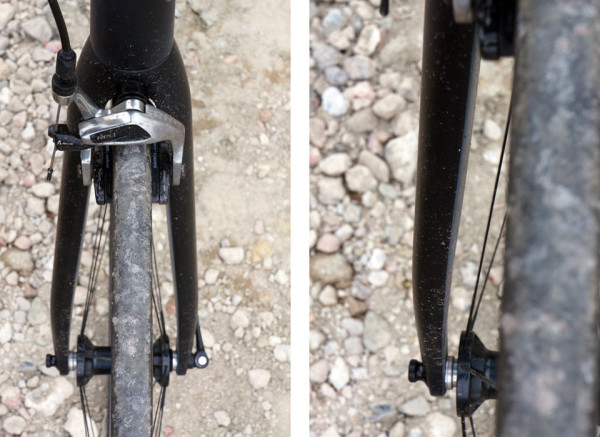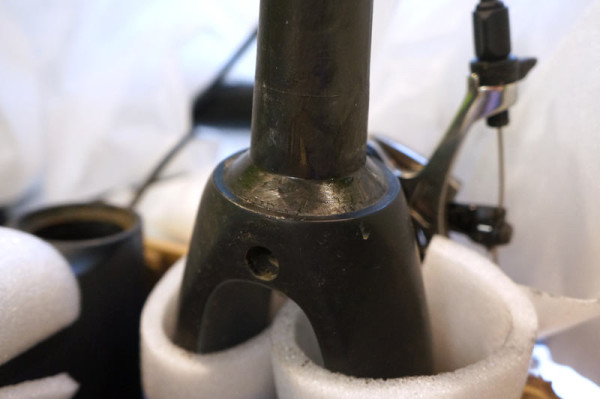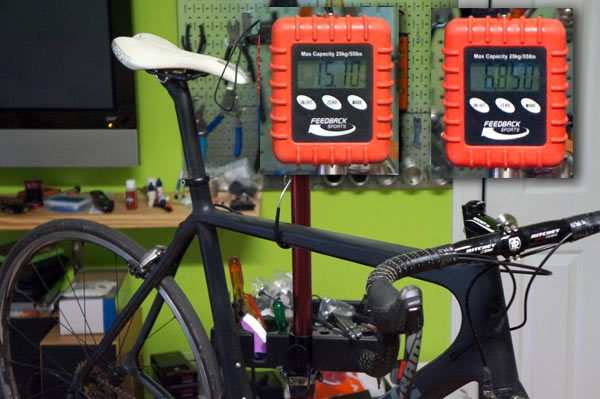Ritte teased their new Ace road bike last fall, saying it would knock the Vlaanderen down a notch to take a seat at the top of their lineup. It shares its geometry with the Vlaanderen, along with a few fitment specs like internally routed mechanical or electronic ports, 700×25+ tire clearance and a generally stiff, race-oriented feel.
But, it switches in a few user friendlier specs like Pressfit BB30 and standard seatpost rather than the Vlaanderen’s BB30 and integrated seatmast. The frame uses an updated, nearly full monocoque frame construction with T700/T1000 high modulus carbon fiber. It’s made using a hard inner mold and bladder system that creates everything but the seatstays as a single piece.
The result is a bike that’s reasonably light and has dangerously good looking lines, but whose real purpose is to enable you to ride hard and fast. Fortunately, it does so without beating the rider up or sacrificing stability at any speed, making it honest-to-goodness one of the best road bikes I’ve ridden…
FRAME OVERVIEW & ACTUAL WEIGHTS
Fair warning, there are a lot of pics here. Personally, I found the Ritte Ace to be one of the best looking bikes on the market and just couldn’t bring myself to edit out all the photos. The mix of hard edges, creased corners and rounded intermediate sections struck a chord. Ritte may be somewhat known for their Belgian inspired paint schemes (also quite attractive), but this one’s appeal was there even with a matte Payne’s Grey color tone.
Ritte founder Spencer Canon said the main goal for the Ace was “Responsiveness through stiffness. Stability through geometry. Liveliness through carbon layup and molding method.” At the risk of spoiling the entire review too early, he nailed it.
The front end uses a 1-1/8″ to 1-1/4″ tapered headtube and a solid, square-ish top tube and downtube section to hold it steady.
Cables enter the ports at gentle angles, with drivetrain running through the downtube and the rear brake popping out the top tube just before the seat tube.
Upper body forces move from the headtube to the BB through a morphing downtube that rounds at the top while flattening out the sides and bottom as it goes down.
The BB shell is boxy and directs your pedaling forces backward through equally stout chainstays.
The seat tube maintains appearances by going from completely rectangular at the bottom to fully round by the time it meets the top tube. Chainstays keep their boxy shape as they go back, but curve and flow to provide the right heel, tire and chainring clearance.
You may have guessed by now, but aerodynamics were not really part of the design process. When I asked about it, Spencer said “The frame shape was designed for maximum tube volume and was dictated primarily by function. Aero wasn’t a consideration with this frame.”
The transition from top tube to seatstays takes a flowing path similar to the Vlaanderen. That plus the seatstay’s shape are these siblings’ only family resemblance.
The brake cable’s exit angle is perfect. Not only does it look good, but it provides a straight, efficient path to the caliper and holds it close enough to the frame to prevent thigh rub. It’s a little thing, but little things like this add up to a happy bike rider.
The seatpost is their own design, too, which looks good but is one of only two small things I don’t care for on the Ace. The post itself is fine – not too stiff and it held the saddle just fine.
The part I could do without is the front bolt knob. It’s good in theory, but you need to loosen the rear bolt more than normal in order to release tension on the knob to make it adjustable by hand. The result is more time spent on trial-and-erroring your saddle into the right angle, which may have to be repeated any time you’re adjusting fore/aft saddle position, too. I also think the bottom of the cradle could use a little more support for carbon rails, but I didn’t have any visible wear and tear to my saddle after the test period.
The second thing I’d change is the amount of overlap for the rear axle. The dropouts are pretty shallow. Sure, your weight is helping press them into the frame, but it wouldn’t take much more material to add some peace of mind. That said, the rear wheel never came loose or did anything to alarm me.
The fork’s dropouts are normal, though, which brings us back to the front of the bike.
Fork legs are stocky, with bluntly rounded exterior shapes and a flat inner face that mimics the seatstays.
No doubt these strong legs contribute to the stiff, responsive ride characteristics Spencer desired. Tracking was spot on at any speed.
The steerer tube uses a 1-1/4″ lower with full carbon bearing race.
We received the bike with a SRAM Red 11-speed group minus the wheels and cassette, built with Ritchey WCS alloy stem and handlebar. I added my own Dura-Ace pedals and wheels set up tubeless with Schwalbe One tires and the Recon titanium 11-27 cassette and used one of my favorite saddles, the PRO Turnix with carbon rails. All in for a size XL (~57) bike, the weight was 15.1lbs (6.85kg) with a tiny bit of road grime still stuck to it. Claimed frame weight is 900g to 1150g depending on size. Claimed fork weight is 360g.
Retail is $2,700 for frameset (frame, fork, headset).
RIDE REVIEW
In this day and age, saying a high end carbon road bike rides really well is virtually meaningless. Heck, modern carbon road bikes retailing as a complete bike for $2,000 ride really well. So there has to be some magic to justify the extra spend. With the Ritte Ace, there is. For starters, the brand has some cachet, and you’re not nearly as likely to show up on a group ride and be one of many with the same bike (unless you’re on a shop team on a shop ride for a shop that sells Ritte, in which case they can be prolific).
More importantly, there’s the ride. The geometry is dialed. It’s quick and snappy, but stable, which is a pretty challenging combination to engineer. I found it equally adept at darting around city corners as it was for hands free riding on crushed limestone access roads. On the pavement, it would react as directed, but wasn’t twitchy. Which is just right for group rides where you need to hold a line but still dodge the occasional kamikaze squirrel.
With aspirations of being responsive and race ready, a bike could easily sacrifice comfort for efficiency, but the Ace brings both in spades. I put in many miles on Florida’s rough country road pavement and unpaved rail trails and bike paths around Flagler County, mostly at a leisurely exploratory pace for 2-2.5 hour stretches. Then I brought it home to the rolling terrain of Greensboro, NC, and joined a few fast friends for city limit sprints and my own hill training efforts. It didn’t matter whether the ride was slow and steady or peppered with intense efforts, the Ace kept its poker face through it all.
Side note: I set the Schwalbe One tires up tubeless and ran only about 90-95 psi, which is 5-15 psi lower than I’d normally run with tubes. That certainly aided the overall comfort and helped offset any vibrations that’d normally make there way through the alloy handlebar (I prefer carbon bars for just that reason). At higher pressures, the usual road buzz was present.
Put it all together and, for me, the ride fell into that magic category. No, it didn’t have thru axles, aero tubes or disc brakes. But it had good chemistry in every sense of the word. It just felt right on every ride. Its name may be Ace, but it’s really more of a Jack of all trades.
